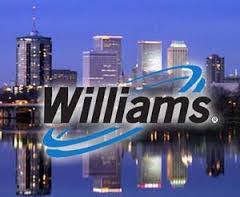
Tulsa’s Williams announced it has puts its natural gas line serving New Jersey tri-state area consumers nearly 11 months ahead of schedule.
The company said it’s Gateway Expansion Project is finished and in time for the 2019-20 winter heating season.
The Gateway Expansion Project is an expansion of the existing Transco pipeline system, providing 65,000 dekatherms per day of incremental firm transportation capacity to serve PSEG Power, LLC and UGI Energy Services, LLC. Expedited project execution and construction in close coordination with Williams’ customers contributed to the early in-service date.
The project provides gas supply capacity to meet the daily home heating, hot water and cooking needs of about 280,000 homes. This is equivalent to removing approximately 590,000 metric tons per year of greenhouse gas emissions as a result of converting heating oil to natural gas. Switching to natural gas is estimated to provide savings of $1,460 per year per household compared to heating oil.
“Natural gas plays an important role in helping to address environmental concerns about air quality and climate change,” said Alan Armstrong, President and Chief Executive Officer of Williams. “The Gateway Expansion Project is a great example of how affordable natural gas can help New Jersey meet its clean energy goals, and I’m very proud of our team for their focus and careful execution of this project, which enabled us to exceed our customers’ expectations and deliver in a safe and environmentally responsible manner.”
Construction on the Gateway Expansion Project began in early 2019, with an original in-service projection of November 2020. The project minimized community and environmental impacts by maximizing the utilization of existing pipeline infrastructure, with virtually all project activities confined to Transco’s existing footprint in New Jersey.
With this expansion, the Transco pipeline’s system-design capacity is increased to 17.3 million dekatherms per day. The system includes approximately 10,000 miles of pipeline between South Texas and New York City. The system is a major provider of cost-effective natural gas services that reach U.S. markets in 12 Southeastern and Atlantic Seaboard states, including major metropolitan areas in New York, New Jersey and Pennsylvania.






